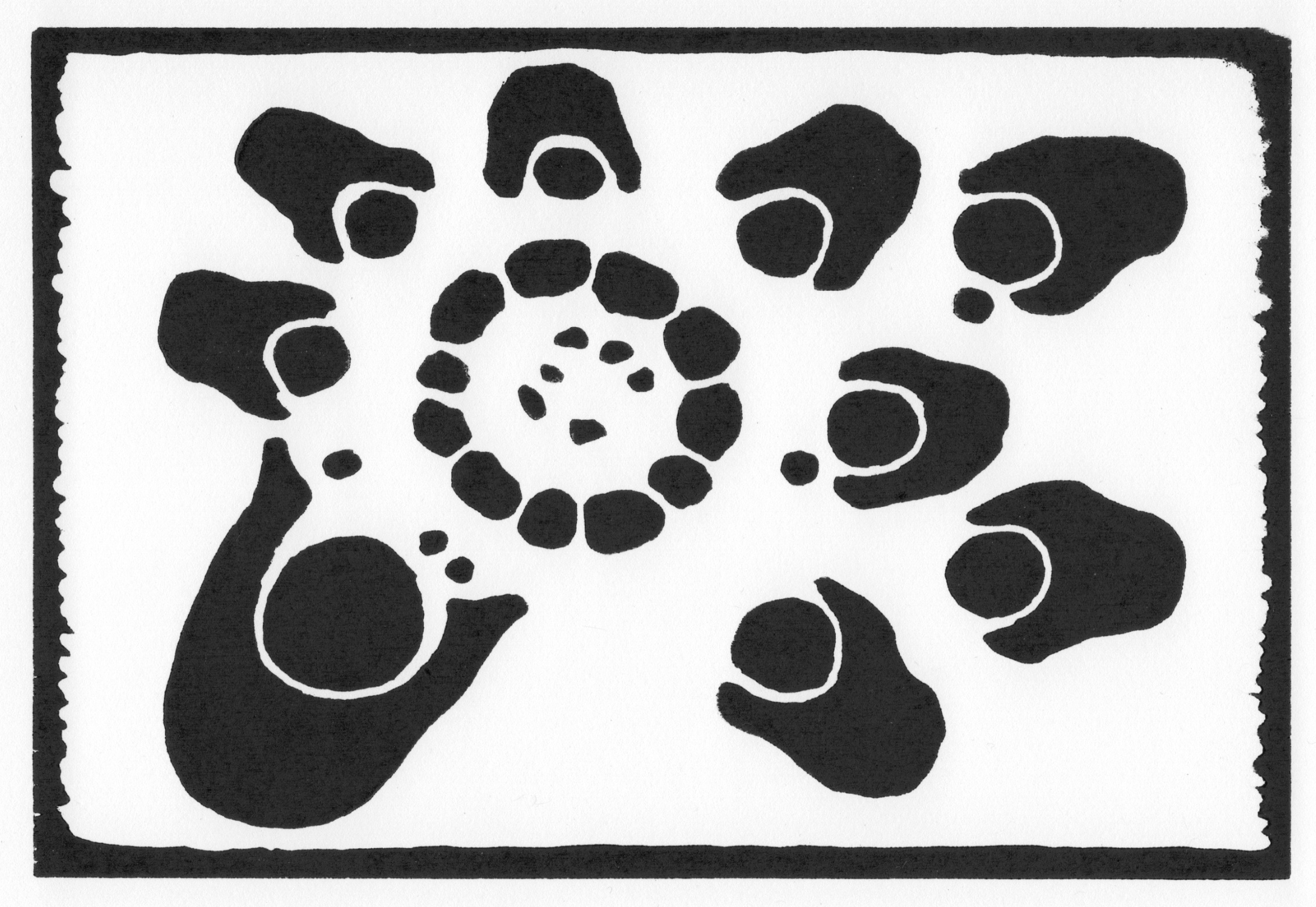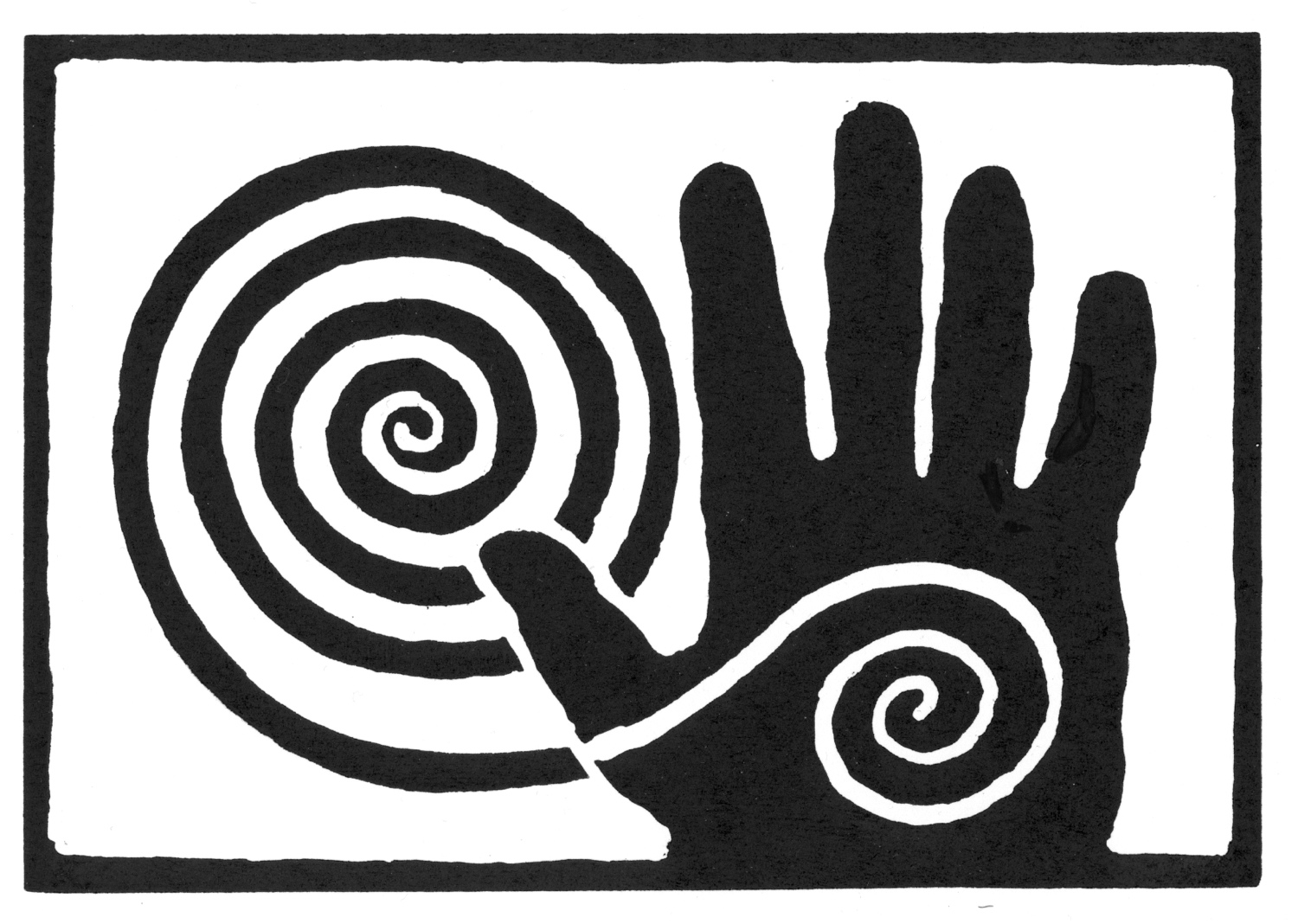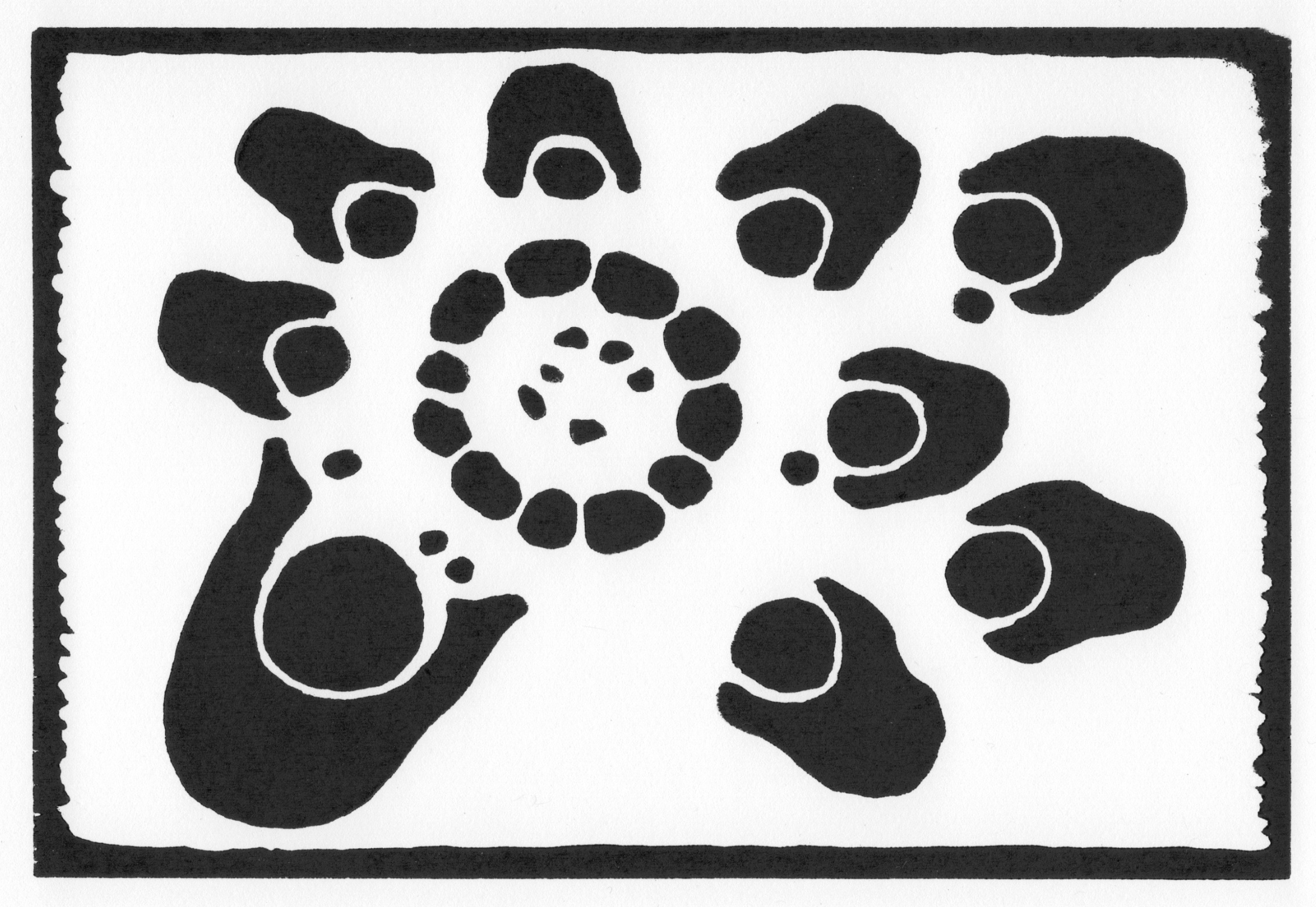This weekly blog post and its host website cover a wide variety of Fred Montague's environmental commentaries, gardening topics, and wildlife/art activities. Please browse the website and the blog archives for topics you are interested in.
Young Wolf-- Beginning of the Woodcuts
The first woodcut I published is the "Young Wolf." In 1997 I experimented with printing woodcut images on my 1913 Golding letterpress after having printed pages for my artists' books and letterpress prints.
The woodcut images are in contrast to my previous drawings and prints. Those incorporated much more fine-line detail. The woodcuts, some of which are nearly silhouettes, emphasize shape, negative space, and hints of detail.
A professor of visual psychology remarked to me at a recent art exhibit that my woodcuts were striking in their high-contrast (black/white) presentation and their subtle hint of important information. In what I took for a compliment, he concluded by saying they conveyed important information-- just as a highway warning sign.
The "Young Wolf" print is a signed, limited edition of 88. The image is 8" x 5.5" and I mat them in white for a 14" x 11" frame. The edition is about half sold-out.
My latest woodcut, "Snowy Owl," featured in the July 20th blog post, is one of four in an owl series that I hope to complete in the next three months.









